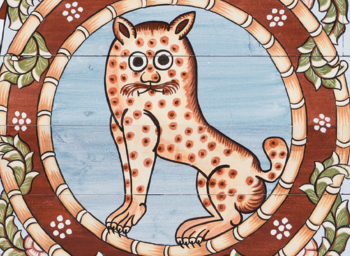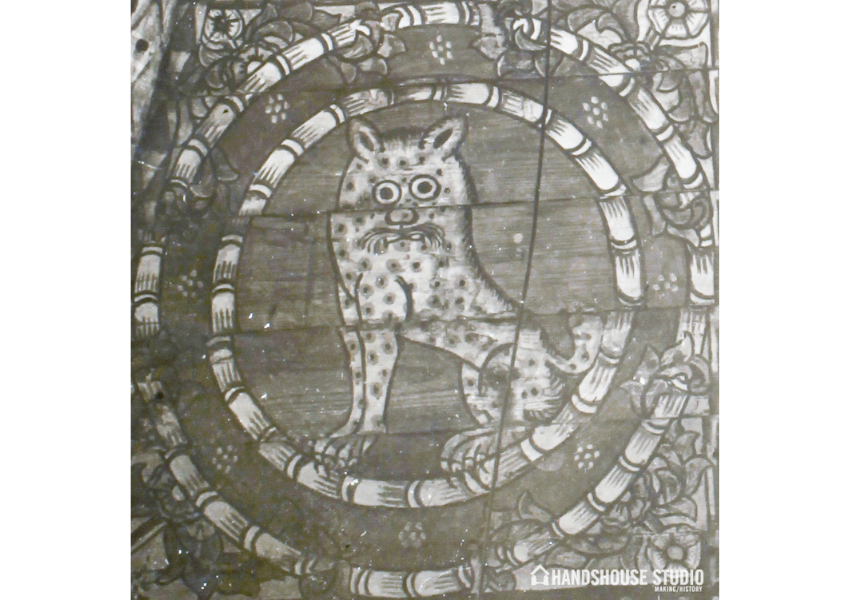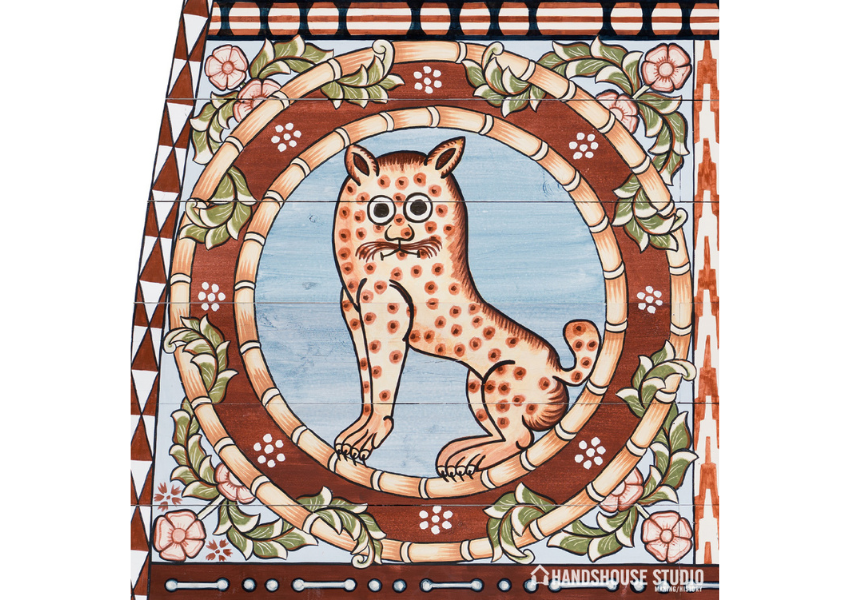A Portal to Gwoździec: The Leopard of the South Dome
Published Apr 19, 2023

A Portal to Gwoździec: The Leopard of the South Dome
Above: (1 min 30 sec) Timelapse of Krista Lima, Handshouse studio Gwoździec Re!construction project leader, during the process of painting the Leopard in the South Dome of the ceiling in Szczebrzeszyn, Poland, 2012.
Project Overview:
Through the MAKING/HISTORY Wooden Synagogue Project, Handshouse produced an extensive collection of historical material research that is vital to the continued work of recovering lost heritage. We have also established a powerful educational model for learning-by-doing through workshops that collaboratively remake lost historic objects, reawakening whole worlds of both tangible and intangible cultural heritage. The calls for access to our research and continued interest in our unique hands-on educational approach are leading us to explore new ways to expand our capacity to share our process and resources.
Through the support of Mass Humanities grant funding, and collaboration with the POLIN Museum, we are starting the next chapter of the MAKING/HISTORY: Wooden Synagogue Project, creating A Portal to Gwoździec: a window illuminating the history of wooden synagogues for a wider public.
The Leopard
The abundant array of animal figures that inhabit the painted cupola of the Gwoździec Synagogue is one of the most striking features of Gwoździec. There are 70 individual animals painted on the major panels of the synagogue’s ceiling. To modern eyes, the inclusion of some of the animals may appear random and even puzzling—did what looks like North American turkeys really roam the woods and farmland of the Polish countryside?
Until recently, the prevailing idea among scholars was that the animals were merely decorative, perhaps even random images reflecting the region’s folk culture. Thomas Hubka, a leading authority on the Gwoździec Synagogue, dismisses this idea, noting that animal scenes account for nearly half of the ceiling’s surface and are central to the overall composition.
This unusual leopard-like creature, with its human-like facial features, appears in a large medallion on the south side of the ceiling.
The Leopard: Archival

Above: Still (Archival). Gwoździec Synagogue, detail from ceiling painting, South Dome, Collection and Copyright of Tel Aviv Museum of Art.
The Leopard: Tracing

Above: Still. A tracing of the Leopard.
The Leopard: Process

Above: Still (in process). Painting the Leopard at the 2012 workshop at The Synagogue in Szczebrzeszyn, Poland.
The Leopard: Finished

Above: Still. Handshouse Studio’s finished painting of the Leopard.
Map of the South Dome

Above: South dome of the reconstructed Gwoździec ceiling. Courtesy of Handshouse Studio.
Click here to return to the homepage of the digital exhibit on Kolture.
Handshouse Studio is a non-profit, educational organization that works to illuminate history, understand science, and perpetuate the arts.
Reflections
What is a replica?
Is the Handshouse Studio reconstruction of the Gwoździec synagogue a replica? What is the difference between a replica and a reconstruction?
What is the meaning of repair?
If the original is gone, and there is nothing to be restored, is a reconstruction a restoration? How can rebuilding still be an act of repair?
If it is not original, is it an authentic object?
As Barbara Kirshenblatt-Gimblett Ronald S. Lauder Chief Curator, Core Exhibition of the POLIN Museum of the History of Polish Jews, asks “What constitutes an “original” or “actual” or “authentic” object?”
Want more?
Get curated JewishArts.org content in your inbox


